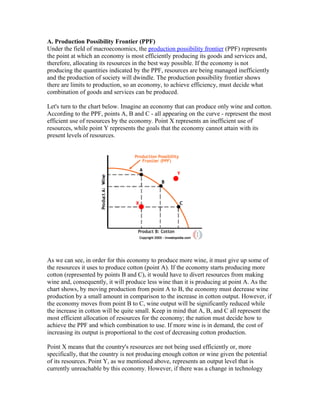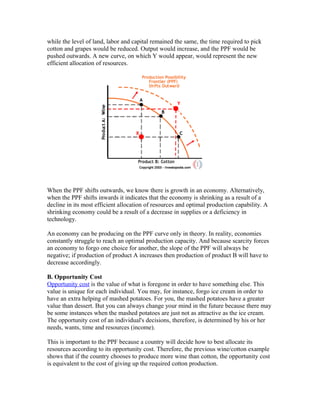The document discusses key economic concepts including the production possibility frontier (PPF), opportunity cost, comparative advantage, and absolute advantage. It explains that the PPF represents the most efficient allocation of resources and shows the tradeoffs between producing different goods. Opportunity cost is the value of the next best alternative forgone. Countries specialize in producing goods where they have a comparative advantage in order to benefit from trade. Absolute advantage occurs when a country can produce more of both goods than another country.



